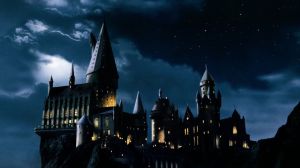A 2016 passage from a Dungeons & Dragons rulesbook has fans once again talking about a longstanding problem with how orcs are depicted in the tabletop game and other pieces of fantasy lore. Earlier today, the term “Orc” started trending on Twitter in the United States, as D&D and fantasy fans debated the issues surrounding the classic fantasy creature. The conversation started when Quinn Welsh-Wilson criticized a passage found in Volo’s Guide to Monsters that noted that orcs could only develop a “limited capacity for empathy, love, and compassion.” Welsh-Wilson prefaced their post with a “casual racism” trigger warning, which set off a heated debate over how orcs (and other fantasy races) are depicted in modern fantasy tales. This weekend’s discourse surrounding orcs isn’t exactly a new conversation, but it’s one that’s always worth discussing. There are two distinctive problematic elements to orcs: one that dates back to their origins in J. R. R. Tolkien’s work, and one that reflects the wider issues surrounding race and ancestral origins in Dungeons & Dragons and similar fantasy games.
Videos by ComicBook.com
While orcs have their roots in goblins and other fairy tale creatures, the modern concept of orcs in tabletop games largely originates from Tolkien’s Lord of the Rings. As depicted in Lord of the Rings, orcs are inherently evil humanoid creatures, and Tolkien described them in a letter as “degraded and repulsive versions of the (to Europeans) least-lovely Mongol types.” Coupled with the fact that Tolkien depicted entire cultures as being representative of good or evil, many viewed orcs as a reflection of the “Other,” a philosophical concept used to paint entire cultures as being somehow inferior or evil because they were different.
Now, Tolkien noted in other letters that orcs were not meant to be representative of a particular culture of people, and that “orcs” could be found on both sides of any conflict along with genuinely good people. However, his depiction of orc culture as a monolithic society of evil, human-like creatures became a standard element in epic fantasy. Over time, various artists and authors used elements of various real-world non-European cultures when depicting orcs in books and other media, thus solidifying the idea that orcs were a reflection of non-European races, which is incredibly problematic.
While the above couple of paragraphs only summarizes why many people take issue with the depiction of orcs in general, it also touches on why many dislike how Dungeons & Dragons and other fantasy tabletop games deal with race in general. Dungeons & Dragons and many other fantasy games tend to describe races as monolithic entities that all share the same physical characteristics and cultural beliefs. This is reflected both in the racial attribute scores bonuses that each race gets in D&D as well as how they are described in passages like the one criticized by Welsh-Wilson. Many people see games like Dungeons & Dragons as codifying and normalizing the use of racial stereotypes, which leads to both racist situations in the gaming table and encourages racist attitudes getting adopted by some players. For instance, a player using the orc race found in Volo’s Guide to Monsters means that they take a -1 penalty to their Intelligence score, which means that the smartest Level 1 orc will always be less intelligent than the smartest Level 1 human. When translated to real-world discussions about races and cultures, it can be easily argued that this pushes an incredibly racist and outdated viewpoint.
Of course, the common “other side” to all of this is that orcs, dwarves, elves, and other fantasy races aren’t real and that they aren’t meant to be representative of human cultures or races. But the very nature of Dungeons & Dragons as a game blurs the lines between reality and fiction. While you’re meant to step into a fictional character’s role in Dungeons & Dragons, it still gives agency to the player by assuming that a character is both unique and is capable of making its own choices. And thus, it’s problematic to assume that a creature with both self-awareness and intelligence will act a certain way simply because they come from a certain culture or look a certain way.
While Dungeons & Dragons (and the wider fantasy genre) has often struggled with these monolithic stereotypes, it should be noted that two of Dungeons & Dragons more recent sourcebooks have offered players alternative rules for orcs that don’t require them to take a racial penalty to Intelligence and don’t have a natural bloodlust or underlying rage. But while these options remain, this weekend’s discussion shows that there’s still much more progress needed.








